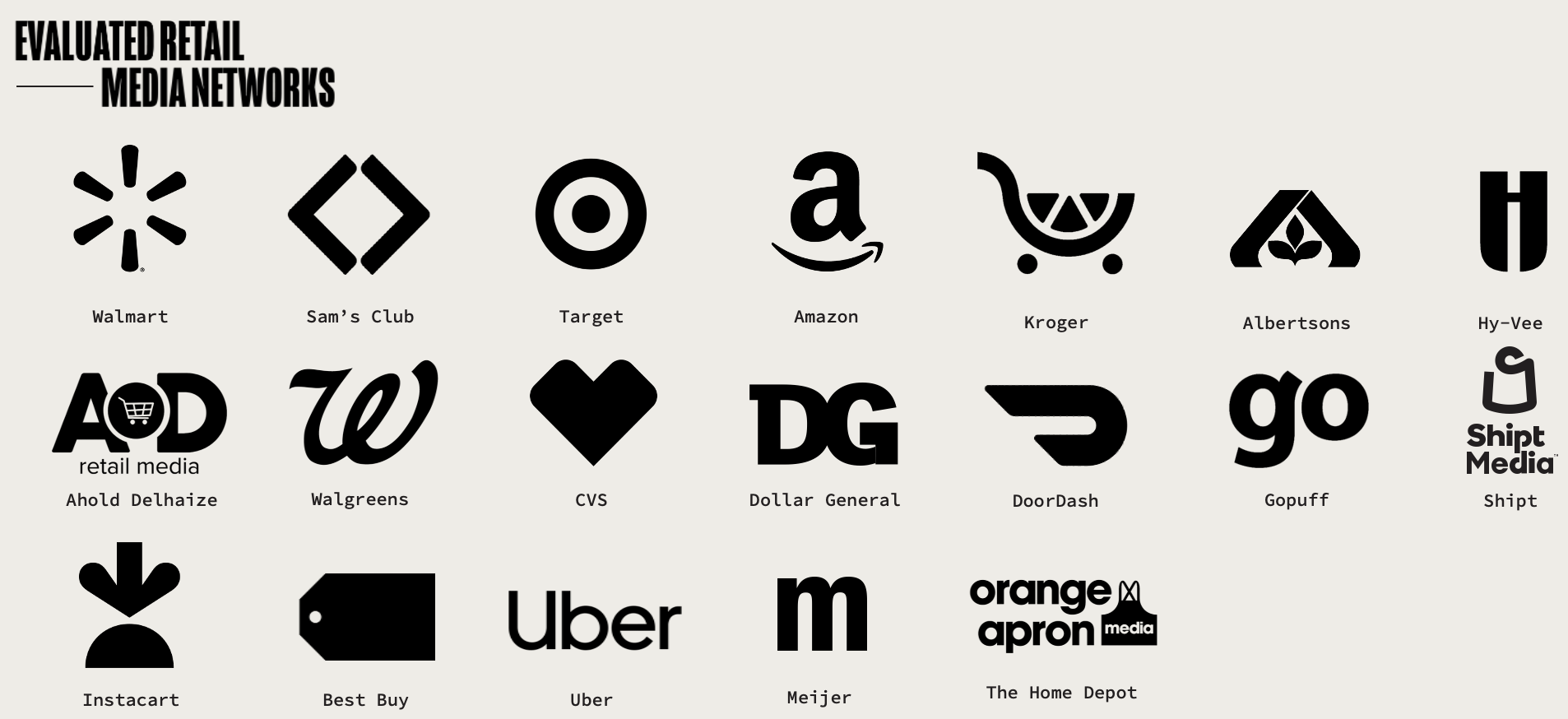The industry’s most informative cross-network assessment guide evaluates 82 capabilities at 19 leading platforms.
To download the report, fill out the form below.
Industry forecasters might be running out of comparisons for retail media ad spending, which is now forecast to hit $129.9 billion in the U.S. alone by 2028 — a 137% increase from 2024 projections, according to Insider Intelligence.

When retail media spending first began to rise, growth was put into the context of all digital media spending, where it will account for 25% of all dollars this year. Analysts then began comparing it to other media channels — most notably broadcast TV, which it is expected to surpass in total dollars by next year.
The next natural step was to assess retail media against all ad spending, and even the comparison here is impressive: That aforementioned $129.9 billion will represent nearly one-fourth of all U.S. media spending in 2028.
Retail media may never gain the same glorified status that broadcast TV once held in the advertising world. But it continues to have its moment in the sun — thanks primarily to the defining characteristics that broadcast TV could only dream of providing: truly targeted audiences and directly measurable results. (Had he been buying retail media, John Wanamaker might have determined which 50% of his advertising wasn’t working.)
But it does seem clear that, although current growth levels will ultimately slow at some point, retail media has become a critical element not just of commerce marketing but of brand marketing, too. And as it continues moving into the physical store environment and nearly every available digital engagement platform, it will need to be viewed as a wholly unique — dare we say incomparable — media channel.
To be clear, though, most of the growth in retail media spending reflects the reallocation of dollars from other marketing budgets rather than incremental funding. That makes it even more critical for brands — faced with an array of choices about where and how to spend their money — to scrutinize their options. That’s why retail media networks are now working more closely with brands to earn those dollars by improving their capabilities and developing unique points of differentiation.

Brand advertisers are tasked with developing a strategic understanding of how they can best leverage retail media to drive incremental growth, which retailers will provide the greatest opportunities for success, and what specific media investments will be most effective at achieving the desired impact.
They also must learn how to align their retail media activity with the rest of the commerce marketing plan, which can improve success not only through more seamless shopper engagement but by fostering greater internal efficiency across functions. This level of organizational understanding is critical to future success.
To help our clients efficiently evaluate spending opportunities, Mars United created a retail media health scorecard to track the capabilities of leading networks across the key criteria advertisers need to optimally plan, execute, and measure their activity. This general framework for network scorecarding is customized for each client to reflect its unique business objectives, budget, performance expectations, and retail partnership priorities. Internally, we continuously update the information to stay ahead of the rapidly evolving capabilities of existing networks and the ongoing launch of new platforms across the retail landscape.
To help the industry at large gain a better understanding of the opportunities available, and to encourage the development of evaluation standards that might ultimately improve both the collaborative process and overall network effectiveness, Mars United publicly shares this Retail Media Report Card on a regular basis. This report presents the foundational scorecarding elements of our evaluation process for clients.
We hope you enjoy the 8th edition of Mars United Commerce’s Retail Media Report Card.
To download the report, fill out the form below.



